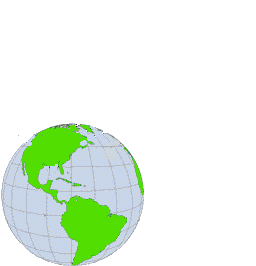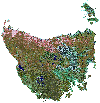Sputnik launched 1957, Explorer 1 in 1958, then with WRESAT in 1967 Australia came third in the
satellite league table, passing Canada's Alouette, and France's FR-1.
Although Australia was at the forefront
of Man's initial steps into space,
the retirement of Sir Robert Menzies as PM
heralded a long era of neglect of satellite technology.
See
The history of Australia in space
Firsts in Space
Milestones in Space Technology
|
 |
FIRST SPACE WALK
|
The first "space-walk"
by the Russian
Leonov on March 18,1965
|

| FIRST SPACE WALK
|
The first US astronaut to perform a (tethered)
space walk:
Ed White.
Date: June 3-7,
1965.
|
|
STS-41B
| FIRST SPACE WALK
|
STS-41B: The First Untethered Space Walk. Orbiter: Challenger Launched: February 3, 1984 Landed: February 11,
1984
|

| FIRST SPACE WALK
|
 First Extravehicular Activity
First Extravehicular Activity
25 November, 1997
Japanese astronaut
Takao Doi and NASA astronaut Winston Scott grabbed
malfunctioning spinning satellite from
the
shuttle.
|
|
CHRONOLOGY
OF
COMMUNICATIONS SATELLITES
|
|
1929
|
Noordung describes radio communications with space station in geosynchronous orbit, large antennas, solar power
|
| 1945
|
Rand study by Ridenour proposed synchronous communication relay system
| |
1946 |
Arthur C. Clarke shows how three stations in synchronous orbit provide global coverage in article "Extra-Terrestrial Relays"
| |
1954 |
Naval Research Lab relays radio voice message using Moon
|
Earth -to -Earth Speech Communication via Satellite
First instance of radio communication via
a satellite, in this case a natural satellite.
| |
Oct 1957
| Sputnik
| First Radio Broadcasts from Space
Only beeps -- but listened to by millions
|
| 1959
| Moon Link - Washington DC and Hawaii
|
Moon Relay Defence Communication
An operational system
| | July 10, 1962
| Telstar I launched
|
First (commercial) telephone satellite
NASA with AT&T . Geostationary.
|
|
Dec 13, 1962
| Relay 1 launched
Relay II launched shortly afterwards
|
First commercial TV transmission via satellite.
Tokyo Olympics transmitted from US to Europe (1964)
|
|
Feb 14, 1963
| Syncom I launched
NASA + Hughes
|
|
|
July 26, 1963
| Syncom 2 launched
on a Delta rocket booster from Cape Canaveral.
| Syncom 2 was the first operational geosynchronous satellite.
Was used for the very first satellite relayed telephone call.
|
|
Apr 6, 1965
|
Comsat's Early Bird launched
|
|
|
Oct 26, 1966
| Intelsat IIA launched
|
|
Dec 7, 1966
| ATS 1 launched
Geostationary satellite above Hawaii.
| ATS 1 transmitted weather images and data to ground stations, as well as video feeds for television broadcasting.
Functioned as stationary beacon satellite for pioneering studies (1969+) of ionospheric plasma
TEC by Elizabeth Essex-Cohen of La Trobe University, Melbourne.
[ TEC = Total Electron Content of the ionosphere along radio path from beacon to receiver.] |
|
Jan 11, 1967
| INTELSAT 2 F-2 launched
aka INTELSAT 28; Pacific 1;
2F2; I2F2; 02639
| Launched by NASA at Cape Canaveral for the International Telecommunications Satellite Corporation.
A COMSAT Corporation commercial communications satellite, it reached its intended location on February 4, 1967.
Notably was used as a beacon satellite for the first ionospheric plasma TEC measurements in an auroral
zone
by La Trobe grad. student Brenton Watkins at ANARE Base, Macquarie Island in 1970.
|

Mariner 10
|
First
Planetary Sling Shot
Mariner 10 was the
first space vehicle to use the gravitational pull of one
planet (Venus) to reach another (Mercury). Launched
November 3, 1973, Mariner 10 was for a short time a solar satellite,
in orbit about the sun. |
|
Pioneer 10 and 11 were the first two
Space Vehicles to Escape from the Solar System
-
Pioneer 10 was launched on March 2, 1972.
-
Pioneer 11 was launched on April 5, 1973.
See
History of Space Exploration: Pioneer 10 & 11 Spacecraft
The famous 6 inch by 9 inch
plaque
with a message to aliens,
was attached
to the casing of both Pioneer 10 and 11.
|
Enquiries and comments to the Webmaster
Dr Harvey A. Cohen
|
 Australia in Space - a History
Australia in Space - a History
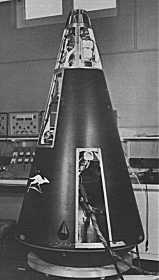
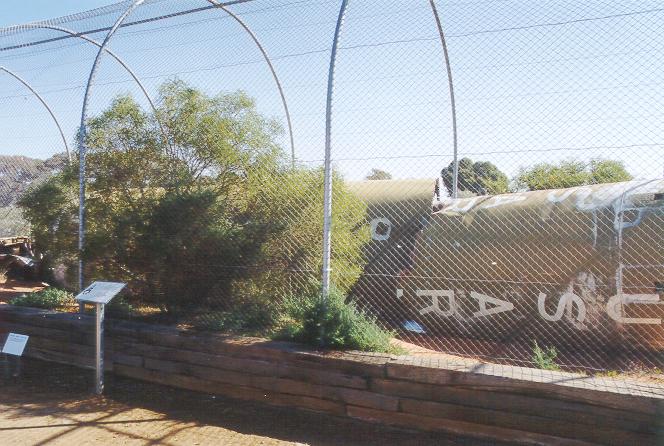 WRESAT Launched 29 November 1967 from Woomera, South Australia.
WRESAT Launched 29 November 1967 from Woomera, South Australia.

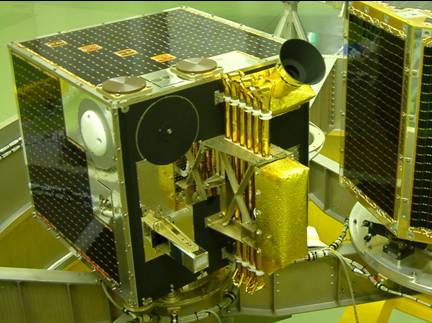


 First Extravehicular Activity
First Extravehicular Activity

